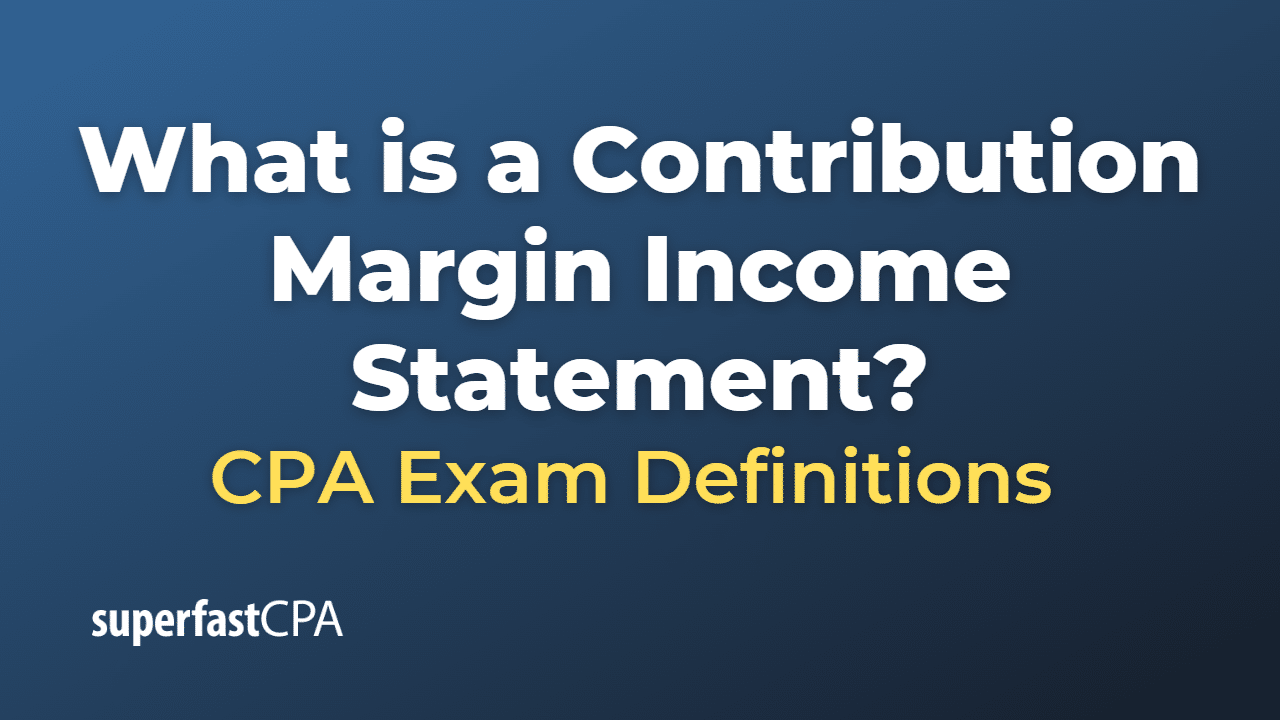
Variable costs are not typically reported on general purpose financial statements as a separate category. Thus, you will need to scan the income statement for variable costs and tally the list. Some companies do issue contribution margin income statements that split variable and fixed costs, but this isn’t common.
How to Calculate Contribution Margin
To demonstrate this principle, let’s consider the costs and revenues of Hicks Manufacturing, a small company that manufactures and sells birdbaths to specialty retailers. To calculate the contribution margin, we must deduct the variable cost per unit from the price per unit. Investors and analysts may also attempt to calculate the contribution margin figure for a company’s blockbuster products.
What Is the Difference Between Contribution Margin and Profit Margin?
This step is part of creating a contribution margin statement, which is a type of profit and loss statement. It shows us the money made from selling products or services after covering the costs to make them. This statement highlights the importance of managing regular income, operating income, and the costs involved in making products or services. The contribution margin income statement shows fixed and variable components of cost information. This statement provides a clearer picture of which costs change and which costs remain the same with changes in levels of activity.
- Further, it also helps in determining profit generated through selling your products.
- COG includes the costs directly tied to making a product or providing a service.
- We will discuss how to use the concepts of fixed and variable costs and their relationship to profit to determine the sales needed to break even or to reach a desired profit.
- Contribution margin is used to plan the overall cost and selling price for your products.
Create a Free Account and Ask Any Financial Question
It’s also a cornerstone of contribution margin analysis, giving enormous insight into a business’s overall financial position. The first step to calculate the contribution margin is to determine the net sales of your business. Net sales refer to the total revenue your business generates as a result of selling its goods or services. You can also calculate the contribution margin ratio from here, which expresses the contribution margin as a percentage of sales revenue. Yes, the Contribution Margin Ratio is a useful measure of profitability as it indicates how much each sale contributes to covering fixed costs and producing profits.
Contribution Margin Per Unit
The companies that operate near peak operating efficiency are far more likely to obtain an economic moat, contributing toward the long-term generation of sustainable profits. Parties concerned with the financial aspects of the business may be more likely to understand break-even in dollars; someone interested in operations may be more concerned with break-even in units. When you calculate your contribution margin and break-even point, be sure to use units or value consistently unless you are comfortable converting them back and forth. Depending on who is viewing your information, you may need to decide if you want to use both methods. This statement is not used for financial reporting, but uses the information generated by creating your financial statements to determine your net profit or loss for the period.
That is, it refers to the additional money that your business generates after deducting the variable costs of manufacturing your products. Let’s dive into how variable costs affect something called the contribution margin. This is a big deal for any business because it helps how to use xero accounting for free them figure out how much money they can make after paying for the costs that change. Imagine you have a lemonade stand; the more lemonade you sell, the more sugar and cups you need. These are your variable costs because they go up or down based on how much lemonade you sell.

Accordingly, the Contribution Margin Per Unit of Umbrella would be as follows. Sales revenue refers to the total income your business generates as a result of selling goods or services. Furthermore, sales revenue can be categorized into gross and net sales revenue.
In this part, we’ll explore what a margin means when we look at income statements. Think of a margin as a way to see how much money a company keeps after paying for what it needs to make and sell its products or services. It’s like when you save money from your allowance after buying something you want. It’s crucial to point out the importance of correctly distinguishing between fixed and variable costs to ensure accurate figures.
On the other hand, the gross margin metric is a profitability measure that is inclusive of all products and services offered by the company. It represents the incremental money generated for each product/unit sold after deducting the variable portion of the firm’s costs. Contribution margin and regular income statements can be very detailed, requiring an in-depth understanding of the business’s inner workings. EBIT provides an overall view of the company’s profitability level, whereas contribution margin looks at the profitability of each individual service or product. An income statement would have a much more detailed breakdown of the variable and fixed expenses. To work out the contribution margin, you need to understand the difference between an item’s fixed and variable expenses.
